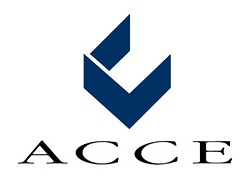
Have your chamber events become a rerun of the same characters exchanging the same tired business cards. If so, it stinks for you and your attendees. People will only come to so many chamber events where they see the same people before they feel like they’ve tapped the possibilities of leads and adding to their network.
You need to keep events fresh, but if you’re doing all the right things in marketing and still getting just a handful of stalwart attendees, it may be time to partner up.
Multi-chamber events can be powerful tools for regional collaboration, expanding business networks, and sharing resources (more bang for your members and your bucks)—but they require clear planning and communication.
Here’s a big list of multi-chamber event ideas to get you started, followed by a section on things to be aware of before partnering.
Multi-Chamber Event Ideas
Networking & Business Development

- Regional Mega Mixer – A large business networking event rotating host duties among chambers.
- Progressive Mixer – Attendees visit multiple businesses in one evening, each hosted by a different chamber.
- Speed Networking – Timed introductions between businesspeople from different communities.
- Industry-Specific Roundtables – Sector-focused events (e.g., hospitality, health, manufacturing) with shared insights and challenges.
- Business Card Bingo – A fun way to encourage mingling by finding people who meet certain criteria on a bingo card.
- Chamber Matchmaking – like a blind date but with another business pro (minus the awkwardness of the good night kiss, of course). Send out a questionnaire to people who want to be matched. Find out their industry and goals for the interaction. Based on their responses, you make the match and give them a few questions to break the ice. Then, open the networking event so they can mingle with everyone.
Education & Training
- Multi-Chamber Speaker Series – A quarterly speaker or panel discussion rotating among chambers.
- Shared Webinar Series – Co-branded virtual learning on topics like HR, marketing, or AI.
- Joint Leadership Program – A regional leadership development cohort pulling from all chambers.
- Workforce Development Expo – Highlighting job training programs and employers across regions. Check out what this chamber did.
Community & Economic Development

- Regional Economic Forecast – Invite economists and local leaders to share data and predictions.
- Legislative Summit – Jointly host elected officials to discuss policy priorities impacting all chambers. The benefit to doing a regional meeting is that it shows the candidate the power the local chambers have.
- Multi-Chamber Business Walks – Conduct business outreach across multiple jurisdictions in one day.
- Cross-Chamber Economic Development Tours – Showcase key sites, innovation hubs, or business parks.
Public Events & Outreach
- Multi-Chamber Night at the Ballpark – Partner with a local team (or other community attractions like the zoo) for discounted group tickets.
- Taste of the Region – Showcase restaurants and wineries from each chamber area.
- Joint Job Fair – Broaden the employer and job seeker base by combining efforts.
- Holiday Market or Gift Guide – Support local makers with joint holiday promotions or a printed regional gift guide.
Exclusive/Invite-Only Events
- CEO Roundtable – High-level discussions for top business leaders across chamber regions.
- Executive Power Lunch – Invite-only networking for board members and top sponsors.
- Women’s Leadership Brunch – Cross-community empowerment event with speakers and panels. An event of this size could be a daunting task for one chamber so combining resources with several can help you host an amazing event with less time invested.
Tours and Travel/Fun and Frolic
- Multi-Chamber International Trip – Pool resources for a group tour (e.g., chamber travel programs to Italy, Japan, etc.).
- Behind-the-Scenes Business Tours – Take turns showcasing flagship companies or interesting local businesses. You can also create themes like a distillery or brewery tour or a “Taste of Italy” Italian cuisine tour.
- Tournaments – from bowling to cornhole or any other competition, you can pit community against community for bragging right or assign teams among all chambers for “interchamber” play.
- Contests – similar to the tournaments, you can create a contest and a little friendly competition like finding the chamber mascots at various locations or best local picture.
15 Things Chambers Should Be Aware of Before Partnering on an Event
Before you partner with another chamber, there are several things to consider:
Alignment and Expectations
Sure, they’re nearby but are they a good match for your organization and will they fit your members’ expectations?
- Purpose & Goals: Be clear on why you’re collaborating—business development, visibility, revenue, etc. What do all chambers hope to get out of the collaboration?
- Target Audience: Make sure all chambers are aligned on who the event is for. For instance, is it a young professionals event (and are your YPs the same?)?
- Revenue Sharing: Agree in writing how sponsorships, ticket sales, and other revenue will be split. Will your revenue be from your member ticket sales or will proceeds be split evenly among all the chamber regardless of where attendees are from? What about sponsors or nonmembers? Will you rotate events at each chamber and the host will receive all the revenue for that event?
- Cost Sharing: Outline which chamber pays for what—venue, food, materials, etc. This is not something you want to make assumptions about.
Logistics & Planning
- Branding: Determine whether the event uses individual logos or a co-branded design.
- Promotion Duties: Decide who is responsible for marketing, press releases, and social media and if everyone will create their own designs or one chamber will design the event branding and everyone else will share it.
- Point of Contact: Assign a lead planner or liaison from each chamber for smooth communication. Who will serve as a media contact should there be any?
- Technology Use: For virtual or hybrid events, agree on the platform and who manages it.
Culture & Politics
- Chamber Culture: Understand how each chamber operates—some may be more casual, others formal.
- Board Buy-in: Ensure each board supports the collaboration.
- Sponsor Conflicts: Avoid duplicate or competing sponsorships that could create tension. Be open about any existing sponsorships your chamber may be tied into such as a top sponsor having right of first refusal on all chamber events.
Follow-Up
- Lead Sharing: Decide how attendee or lead data is shared (or not).
- Evaluation: Build in a post-event debrief to discuss what worked and what didn’t. Does everyone see a benefit to continued collaboration. Share attendee feedback. Did the event sell out?
- Reciprocity: Be aware of imbalances in effort or turnout—plan for give-and-take over time. Reallocate assignments and resources based on strengths and availability in the future.
Multi-chamber events aren’t just about bigger crowds—they’re about expanding your collective reach, increasing member value, and showcasing the power of collaboration. By sharing resources, ideas, and responsibilities, chambers can create truly memorable experiences that drive regional economic growth and stronger business relationships.
The key to success is clear communication, shared goals, and mutual respect. When done right, these partnerships can elevate all participating organizations—and the communities they serve.
So don’t wait for the perfect opportunity—create one. Reach out to a neighboring chamber and start the conversation. The possibilities are bigger than any one chamber alone.

